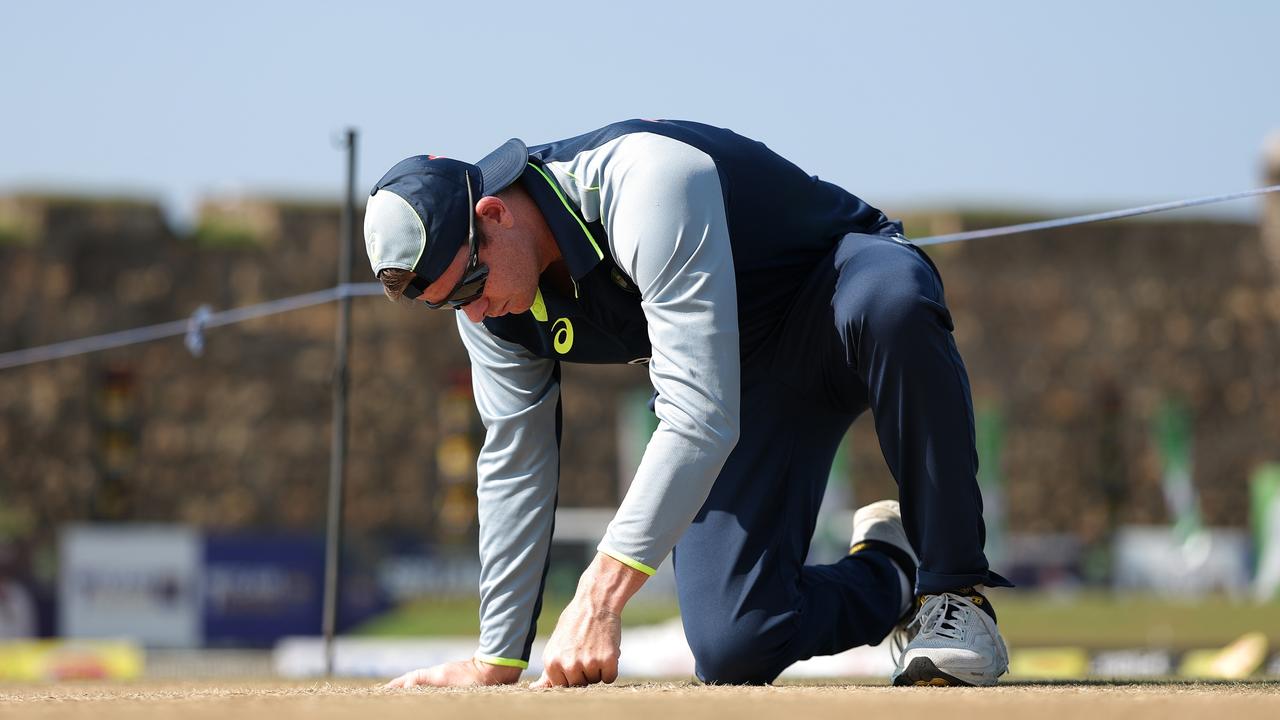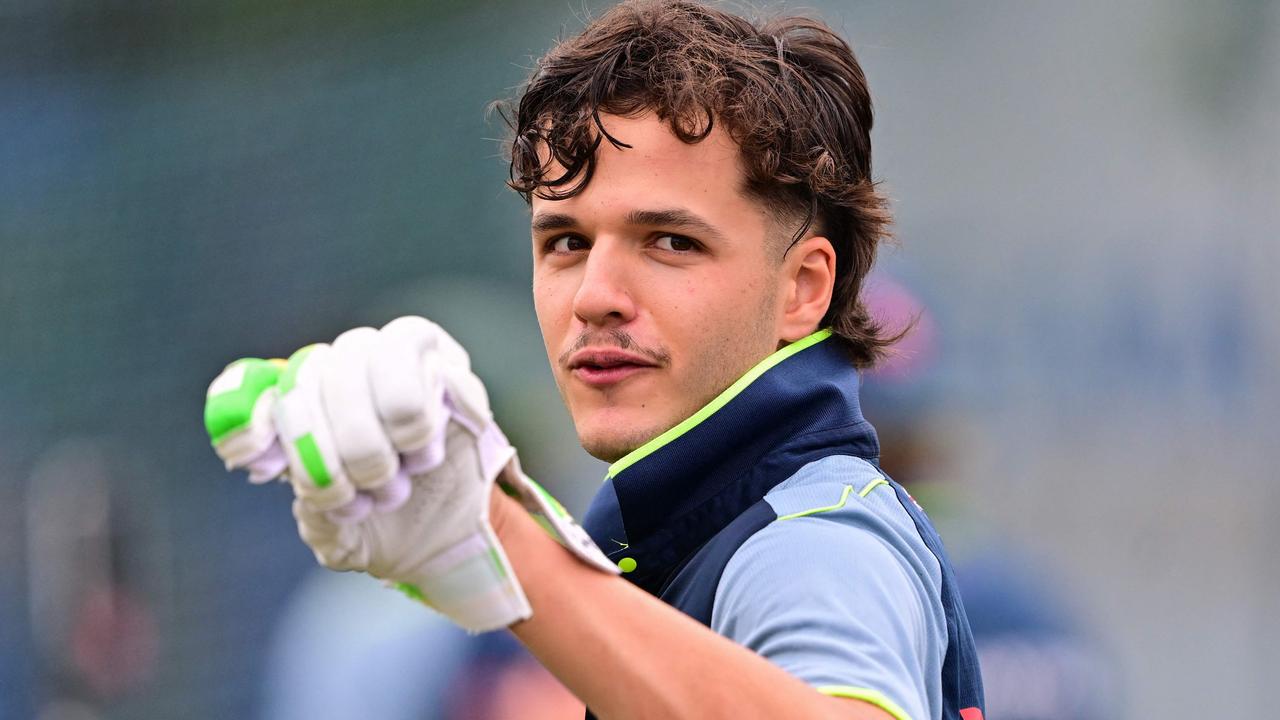‘The next frontier’: Cricket World Cup’s glaring $9 million pay gap
Cricket has taken strides towards gender equity over the past decade, but the disparity between male and female athletes remains glaring.
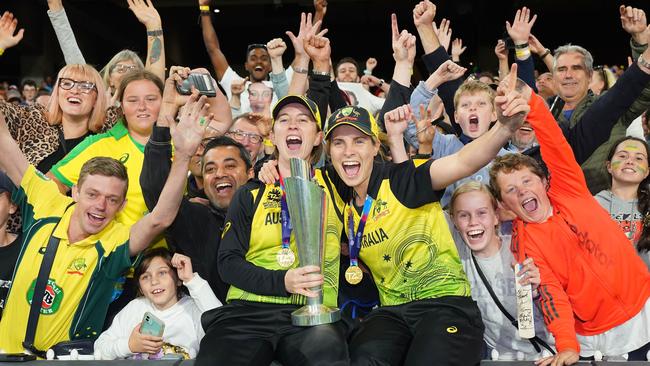
Cricket
Don't miss out on the headlines from Cricket. Followed categories will be added to My News.
Last week, the US women’s national football team reached a landmark settlement with their governing body over equal pay, promising the athletes AU$33.2 million — mainly in back-pay.
As part of the eight-figure settlement, US Soccer pledged to equalise prize money between the men’s and women’s national teams across all competitions, including World Cups.
A few days earlier, the International Cricket Council confirmed the prize money for the upcoming Women’s World Cup would be $9 million less than the corresponding men’s competition.
Watch every match of the ICC Women’s Cricket World Cup LIVE & FREE on Kayo Freebies. Join free now and start streaming instantly.
Although cricket has taken its own strides towards gender equity over the past few years, the disparity between male and female athletes remains glaring.
The prize pool at this month’s Women’s World Cup will be 75 per cent larger than the previous tournament, with $4.8 million up for grabs at the New Zealand-based tournament.
However, that sum is a fraction of the total prize money awarded at the corresponding men’s event, with $13.8 million handed out at the 2019 Men’s World Cup.
“Those sorts of things are really important in terms of the message that it sends more broadly in the community,” Australian vice-captain Rachael Haynes told news.com.au.
“Even just last week, we saw the US soccer team win their fight for pay equity in their sport, so I think there is a lot of groundswell around this, and particularly governing bodies needing to make sure there is gender equity in their sport.
“I definitely would suspect over time we would see greater parity in prize pools and pay.”
Earlier this summer, Cricket Australia announced a $1.2 million cash injection to increase the base salary for female athletes that hold a contract in the WBBL and WNCL to more than $65,000.
But this remains considerably lower than the average retainer of $198,000 that men’s players who compete in all formats at domestic level receive.
Australian cricketers are among the country’s best paid female athletes, but the gender pay gap is still cause for concern.
“The biggest thing for Australian cricket is getting our domestic players up to the point where they can call themselves full-time,” Haynes said. “That’s the next frontier for domestic cricket and cricket in general in Australia.
“I’m sure there’s discussions that are happening behind the scenes, and working out how we can bridge those gaps and making sure we achieve gender equity.”
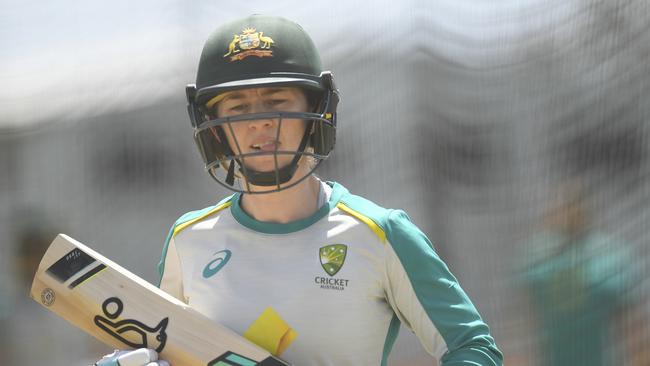
‘Scar tissues’ from 2017 have healed
Australia were touted as favourites heading into the 2017 Women’s Cricket World Cup, and rightfully so.
With the likes of Meg Lanning, Alex Blackwell and Ellyse Perry among their arsenal, the Aussies cruised into the knockouts before Indian batter Harmanpreet Kaur put together a career-defining knock in the must-win semi-final.
Kaur brought up her half-century against Australia in 64 deliveries — she then struck 120 runs from her following 51 balls at the crease.
It was a white-ball masterclass, and the Aussies fell 36 runs short in the run chase. England were crowned champions after defeating India in the decider by nine runs.
Five years later, Australia is searching for redemption in New Zealand.
The 2022 Women’s Cricket World Cup, postponed 12 months due to the Covid-19, gets underway this week across the Tasman, and Australia are once again the frontrunners to lift the coveted trophy.
Haynes, who’s about to embark on her third World Cup campaign, is adamant the scars of 2017 have well and truly healed.
“We’ve sort of moved on from that point as a group,” she said. “It was obviously really disappointing at the time.
“The team’s really different to what it was in 2017 as well. There’s lots of fresh faces. The scar tissues from that tournament aren’t really there, because there is just a freshness to the group.”
Australia’s ODI record since the 2017 World Cup is nothing short of remarkable — 31 wins from 33 matches, with just two defeats.
The historic purple patch was highlighted by a record-breaking 26-match unbeaten streak from March 2018 to September 2021.
The Aussies are also coming off a comprehensive Ashes triumph that included three straight ODI wins over England.
But Haynes knows these numbers and records become obsolete once the tournament kicks off.
“We’ve played some really good cricket over the last couple of years, but when you get into tournaments it doesn’t count for much, because you’ve got to keep winning the game that’s in front of you,” she said.
“We’ve seen some really good cricket from all different countries over the last couple of years and England obviously comes in as defending champions too. From our point of view, we’re chasing them.
“Hopefully we can be there at the business end.”
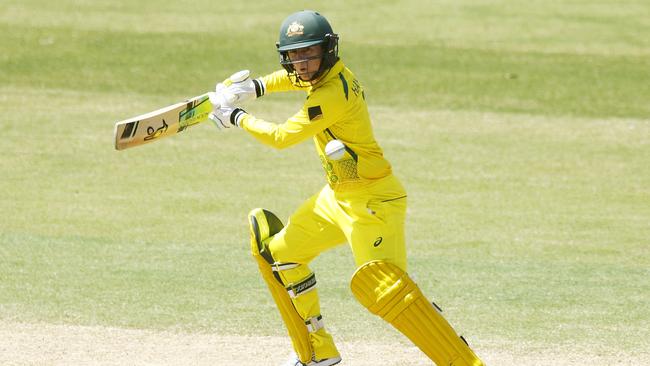
From under-12 boys to World Cup glory
Like several of her teammates, Haynes’ family introduced her to cricket. Growing up in Melbourne, the left-hander fell in love with the game honing her craft in the backyard and on the street.
“It was something we always did that brought us together,” Haynes recalled.
“We’d always find ourselves out in the backyard enjoying a game of cricket together. Sometimes it got a little bit more competitive than it probably needed to be.”
When a neighbour spotted Haynes batting in the street, they invited her to join North Balwyn Cricket Club that summer.
“The rest is history, so to speak,” she said with a laugh.
Haynes started her cricket journey playing for the North Balwyn CC under-12 boys team, and the opposition was at times startled when she waltzed into the middle.
“I was one of the only girls playing in the competition at the time,” she explained. “When I used to walk out to bat, it used to take other teams back a little bit, just clarifying if I was a girl.
“I was a little bit worried about whether or not I would be welcomed into the team, and if I’d have any friends.
“But once I started going to training and playing alongside them, the boys I played with were great, they were very welcoming.”
Haynes progressed through the Victorian pathways program before eventually making her international debut in 2009. She cracked a classy 98 on Test debut against England and in the 13 years since has registered 3264 international runs, 22 fifties, five World Cup titles and four Ashes triumphs.
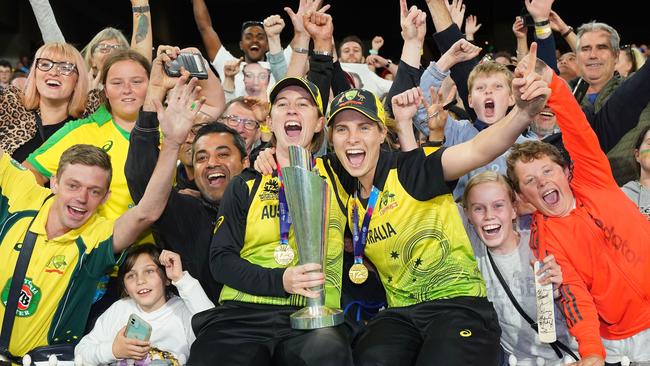
Women’s Social Smash
After leading the Sydney Thunder to its second Women’s Big Bash League title in 2020, Haynes missed last summer’s campaign due to border restrictions and quarantine requirements.
Haynes and her partner Leah Poulton had recently welcomed their first child Hugo, and the 35-year-old planned to skip the opening WBBL matches in Tasmania while on parental leave.
But border closures made it almost impossible for Haynes to join her Thunder teammates for the second half of the T20 tournament.
During her extended break from professional cricket, Haynes travelled up to the northern beaches and took part in the Women’s Social Smash, a Cricket Australia initiative designed for women of all ages and abilities.
While traditional forms of cricket can be confronting for new participants, the Social Smash focuses purely on engagement and social connection.
Each Social Smash game is played with a shorter pitch and boundary; a soft ball is used and no protective gear is required. There are no outs and everyone gets to bat and bowl.
It draws on the fundamentals of backyard cricket, where Haynes started her own journey to the Australian national team.
“The thing that really resonated with me was that it really was an extension of the community,” she said. “It was just about people having a go and actually enjoying what they were doing.
“It wasn’t about having all the new gear or needing to have a particular uniform or anything like that. You can literally walk off the street and play.
“If cricket can continue to focus on those things and provide different opportunities for people to participate, then we might see the game continue to grow in different ways, rather than just in traditional formats.”
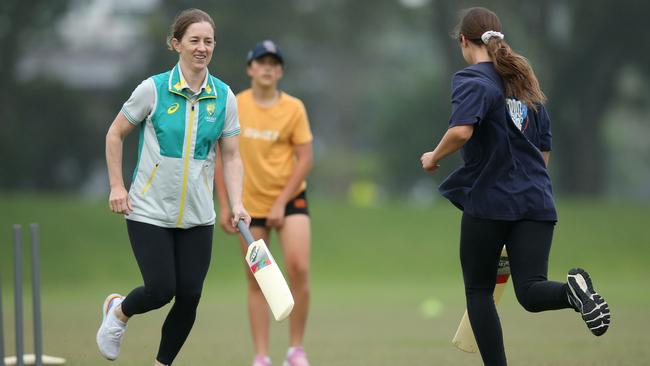
Australia will come up against reigning champion England for its opening fixture of the Women’s Cricket World Cup, with the first ball scheduled for 12pm AEDT on Saturday.
The squad’s preparations hit a snag on Tuesday when New Zealand all-rounder Sophie Devine plundered an unbeaten 161 off 117 balls to embarrass Australia’s world-class bowling attack.
It was a rare thrashing for the Australians, but Haynes was not concerned by the nine-wicket defeat.
“It was good for our bowling group to be under pressure, so we’ve got some good lessons to take out of today,” she told reporters at Christchurch’s Bert Sutcliffe Oval.
“It’s a good thing to be put under the pump, particularly in a practice game. Sometimes that’s really had to contrive at training.
“That’s the beauty of practice games.”
Australia’s Women’s World Cup fixtures
March 5 vs England, Seddon Park, Hamilton, 12pm AEDT
March 8 vs Pakistan, Bay Oval, Tauranga, 12pm AEDT
March 13 vs New Zealand, Basin Reserve, Wellington, 8am AEDT
March 15 vs West Indies, Basin Reserve, Wellington, 8am AEDT
March 19 vs India, Eden Park, Auckland, 12pm AEDT
March 22 vs South Africa, Basin Reserve, Wellington, 8am AEDT
March 25 vs Bangladesh, Basin Reserve, Wellington, 8am AEDT
More Coverage
Originally published as ‘The next frontier’: Cricket World Cup’s glaring $9 million pay gap




